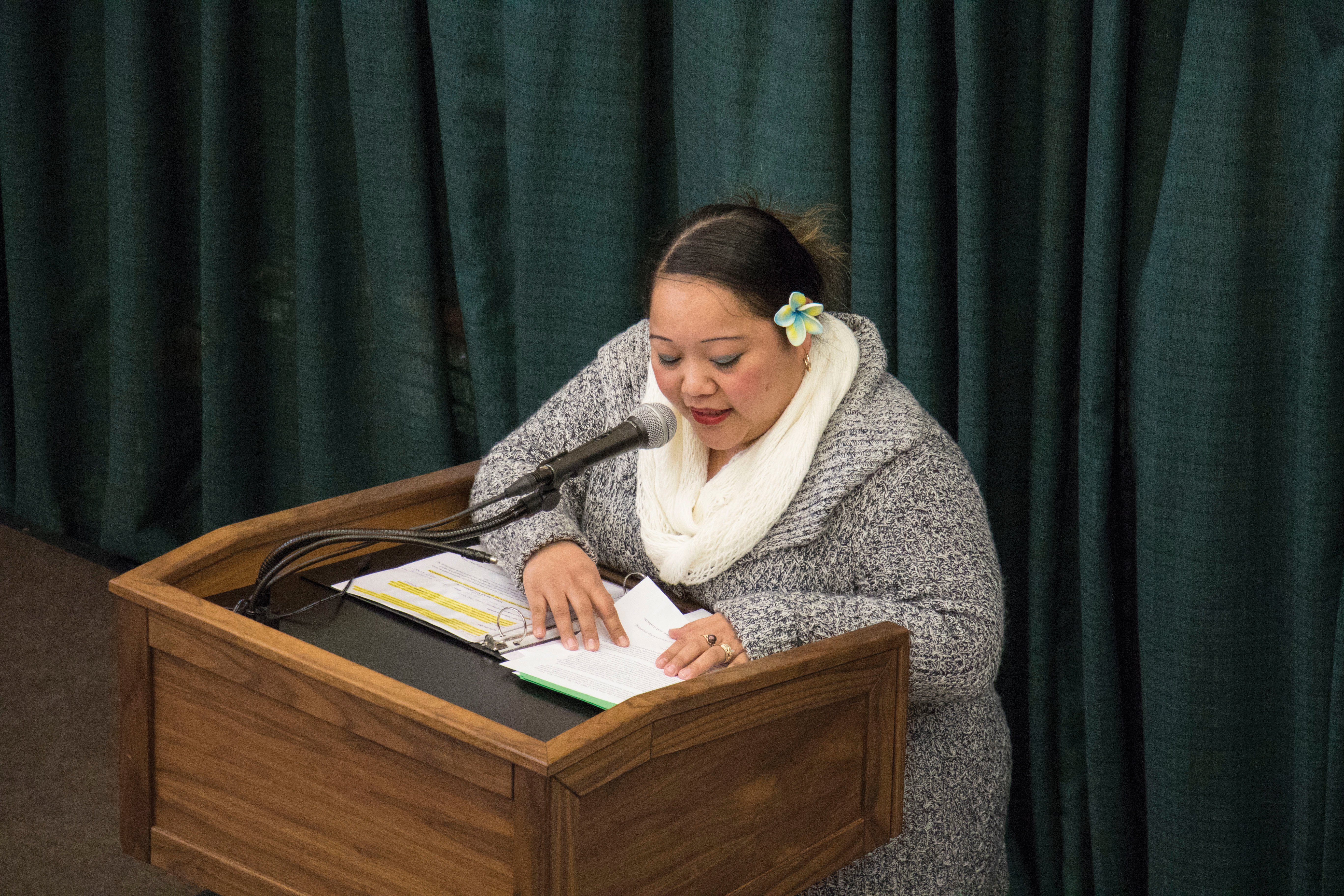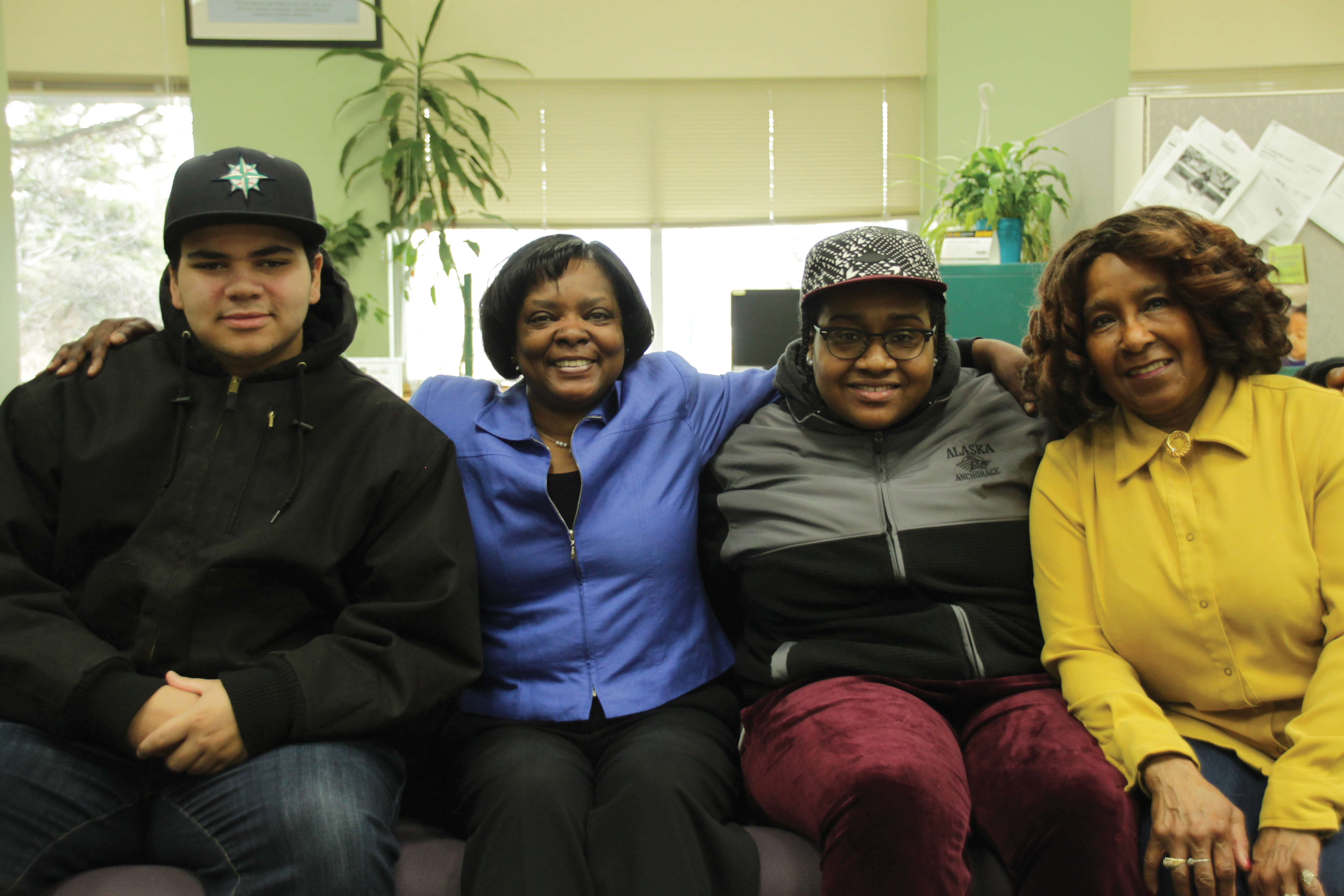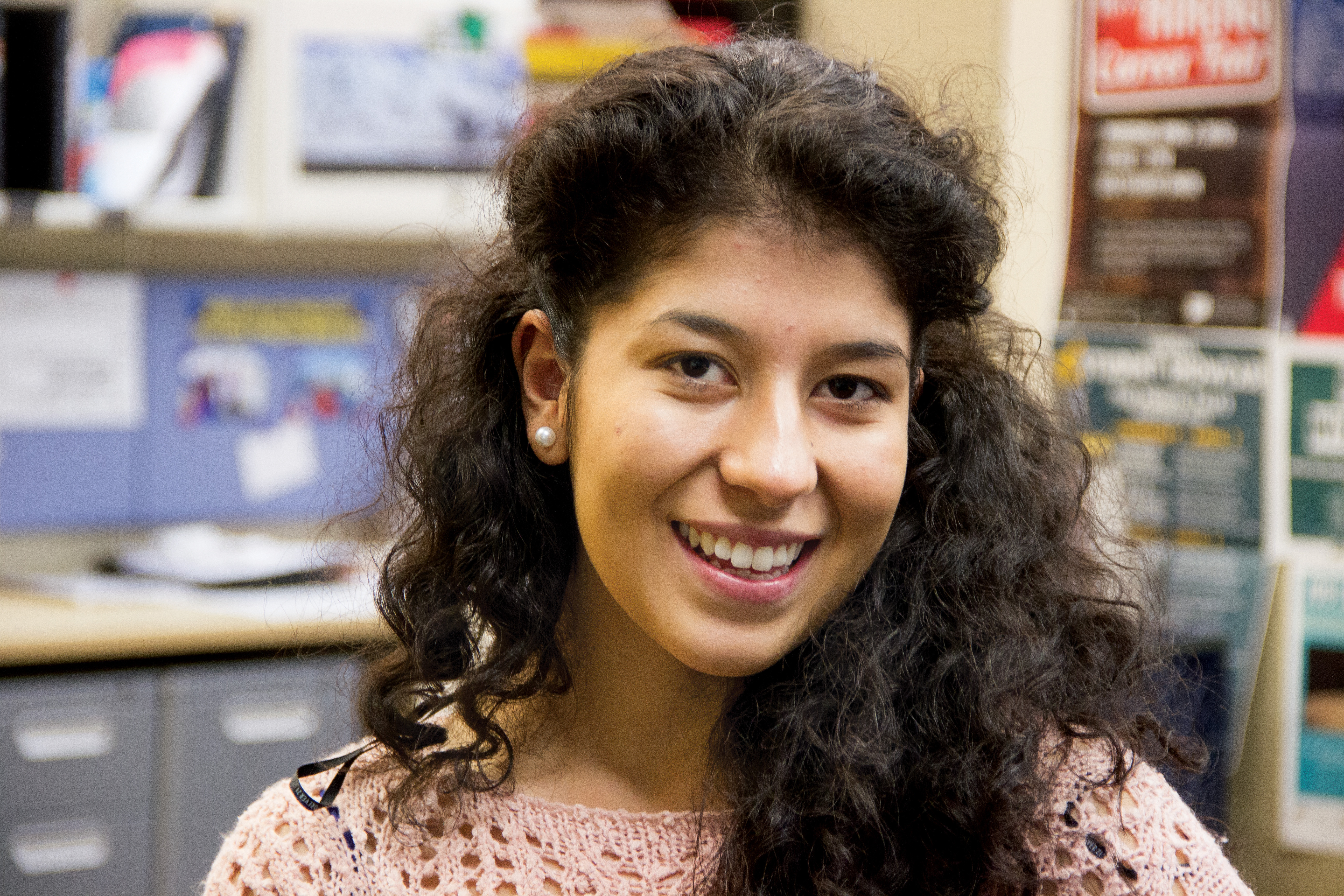This content has been archived. It may no longer be relevant
“TRIO programs do whatever it takes to get students a higher education.”
Diana Reyes’ parents never went to college. Her mom finished high school, but her father never got the chance: civil war in her parents’ home country of El Salvador put a stop to that. Their story is not uncommon for first generation Americans. Like many before them, the Reyes family came here to find a better life.
When she was in junior high, Reyes wasn’t thinking about college. She said back then, “college wasn’t really a thing for me.” All that changed when she was introduced to TRIO while attending Wendler Middle School.
TRIO consists of federally funded nationwide programs designed to help a range of students achieve academic success. Some are first-generation college students, some are from low income families, and others have disabilities.
In Reyes’ case, she found Educational Talent Search, a TRIO program that focuses on students in middle and high school. It serves about 750 students in the Anchorage School District and helps with tutoring, college admissions, and financial aid. Essentially, the program does whatever it takes to get kids into college. Reyes said an adviser told her that the program would be perfect for her.
She said her parents wanted her to attend a university, but there was an issue: They weren’t familiar with the specifics of making it happen. They could not help her with the applications, financial aid, or other hurdles for a college-bound kid. If Reyes had any doubts about the program, her parents did not. She remembers her parents telling her, “Do it. Do it because we can’t help you the way they can help you.”
The next few years in the program kept her engaged through tutoring and summer academies at UAA. She learned about different career opportunities by listening to speakers and going on field trips. By the time she was accepted to the University of Alaska Anchorage, Reyes was already familiar with the campus.
She was interested in becoming a doctor and TRIO exposed her to careers in the medical field. After Reyes saw the nursing labs, she knew what she wanted to do. Now she’s a sophomore and will be applying to the nursing program in the fall.
Through TRIO, Reyes found and applied for scholarships, which she said pays for her tuition. “Without [TRIO], I don’t think that I would have been able to actually come to college,” she said.
An Energy Drink For Success
While TRIO helped Reyes build bridges toward college, another UAA student found the program while already in school. Her name is New Year Solomona. She spoke at UAA’s TRIO Day, where students shared their stories and participants celebrated the program. Originally from American Samoa, Solomona said that after working a few jobs, she realized that going to college could be beneficial. She started taking classes at UAA, but fell behind. She was shy and hesitant to ask for help, but knew something had to change.

“I was worried about how I would survive in college while working three jobs,” Solomona said. “However, I had to overcome it somehow, so why not start now?” She found Educational Opportunity Center, a TRIO program that focuses on getting adults access to higher education opportunities and serves about 1,200 participants.
The program taught her about available trainings, financial aid, balancing a schedule, and discipline. Now she is working on a bachelor’s degree in business management and hopes to get a masters in business administration. She credits the program for much of her success, calling it her “energy drink.”
Tough Love and Squeaky Wheels
Granted, it’s the students who ultimately need to get themselves where they want to go, but they are not alone.
Each program has staff working to help keep students on track. Constance Carlisle is the student success coordinator at Student Support Services, a TRIO program that focuses on students enrolled at UAA and serves about 160 students. She’s a full-service counselor, tutor, friend, and self-described “squeaky wheel.” She does anything it takes to get her students through college.
Students in the program are diverse. Some are from foreign countries, requiring coaching with language or cultural awareness. Others need to take care of their families while juggling school and work. Some have disabilities and need to be referred to UAA’s Disability Support Services.
“We’re getting them connected to the right people in the right departments,” Carlisle said. Going to college can be tough for anyone and sometimes, students just need a push in the right direction. “Because we know that there’s so much to learn about navigating UAA… we do make sure that we’re walking them through the process to ensure that they’re getting their needs met.”
Carlisle will walk them to where they need to go if that’s what it takes.
She meets with her students once in the fall and again in spring, but they are welcome to stop by anytime. Carlisle says it’s important for her to build trust with her students and it helps in that she can relate to them. Her own path wasn’t much different from theirs. “I was the first out of a family of 13 to earn my degree,” Carlisle said. “So as I reflect back on that, I think about what our students are going through and what I’ve accomplished and what I’ve gone through to get to where I am today.”
Before she became a counselor, Carlisle was the Student Support Services office manager for three years while taking classes in social work at UAA. She put three kids through college before getting her own degree. Like parenting, sometimes her job requires tough love, but she thinks it’s worth it. Without the program, Carlisle believes that there would be a lot more students falling through the cracks.
Giving Back
It’s easy for Carlisle to empathize with her students because of her own path through school, but it’s not uncommon for those working in the program to be first-generation college students. Some were TRIO students themselves.
Reyes, who found the program in junior high, is a student worker at Educational Talent Search, where she tutors and mentors high school students and helps with administrative work. Moving from participant to mentor has made her appreciate how much hard work goes into keeping the program running.
Megan Tompkins, project director for ETS, said that it’s not only rewarding to see the students succeed in their education, but also to see them giving back to the program. “That’s the highest praise that we could ever hope for,” Tompkins said. “That speaks a lot to our program.”
There’s a tangible enthusiasm when students or advisers talk about TRIO, whether it’s the people, the opportunities, or the program itself.
Theresa Lyons, director of New Student Orientation thinks there’s something about the program that sticks with you forever. “Once you get TRIO,” she said, “it’s in your blood.”

Ammon Swenson is a senior in the journalism program at UAA. He has worked as a reporter and news director for KRUA 88.1. He currently produces audio stories for Crude Magazine.

